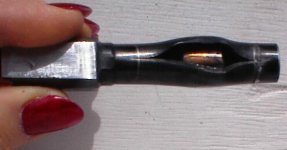what I learned last weekend . . .
I shot in an IPSC match on Saturday morning, an IPSC/IDPA style non-sanctioned "outlaw" match on Saturday evening, and at another IPSC match on Sunday. I have never shot in three matches in two days before. (There were a lot of years there that I only shot in three matches all year . . . )
I don't particularly like assault or field courses, where you run around from place to place blazing away at lots of targets. Movement from shooting box to shooting box, or movement from position of cover to position of cover is fine but some of the field courses in USPSA are fairly pointless.
Even so, usually they have a couple of interesting aspects about them.
I blew a classifier stage called "Cash & Carry" by rushing a shot a little too much and hitting a no shoot target. I blew another stage through a mental lapse -- the second string required you to engage each of 7 targets at from 5 to 35 yards with one round each, reload, and re-engage the targets with one round each again weak hand only. I had good hits, my reload was fast, and I double-tapped three targets before I caught myself, transfered the gun to my weak hand, and continued on. 6 procedural penalties don't help your score very much . . .
On all the other stages all weekend I was pretty smooth, didn't drop too many points, didn't make any procedural errors, and wasn't fast enough to be competitive.
I did have a very new shooter on my squad on Sunday who had a couple of failure-to-extract malfunctions. We gave him some on-the-spot training on how to clear malfunctions. His extractor was in good shape, and we think the malfunctions occured because he cleaned & lubed his gun the night before the match, and left Break-Free in the chamber, which caused the fired cases to stick. Once we ran a Bore-Snake through his barrel and got it all dried out, the gun ran fine.
 Looks like fun, unless you're trying to make up time for a blown stage!
Looks like fun, unless you're trying to make up time for a blown stage!
